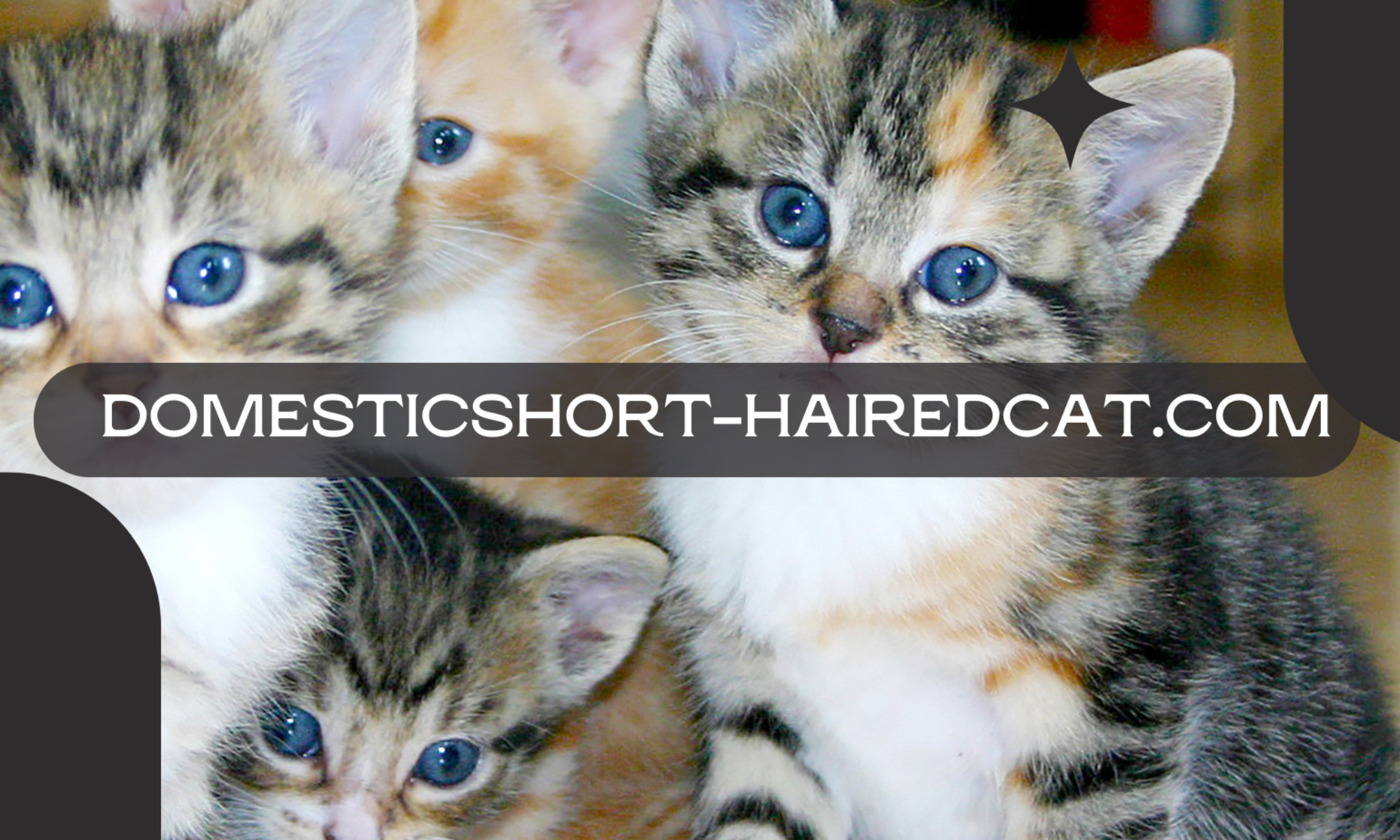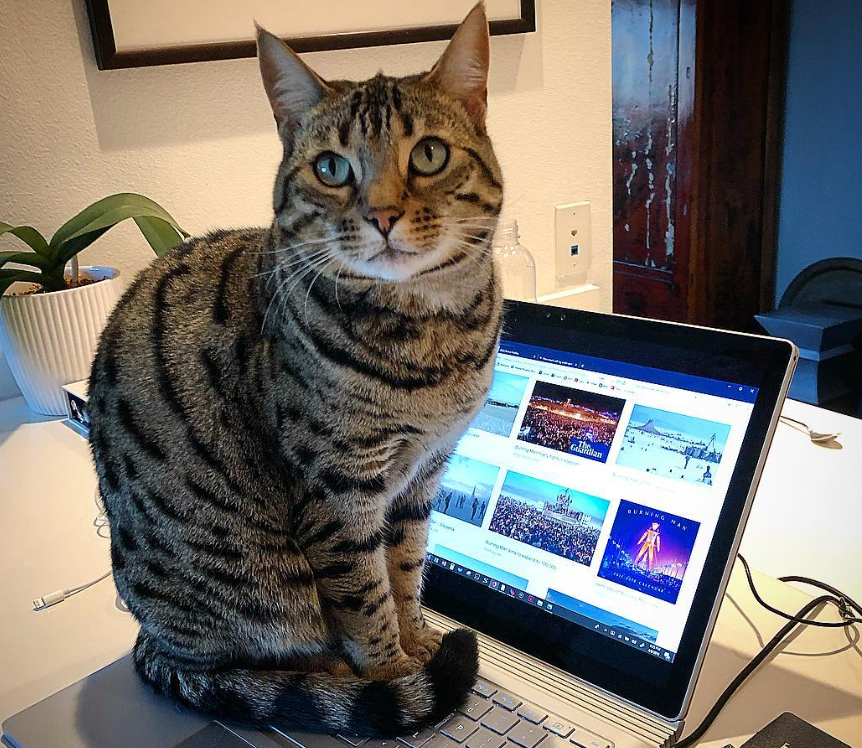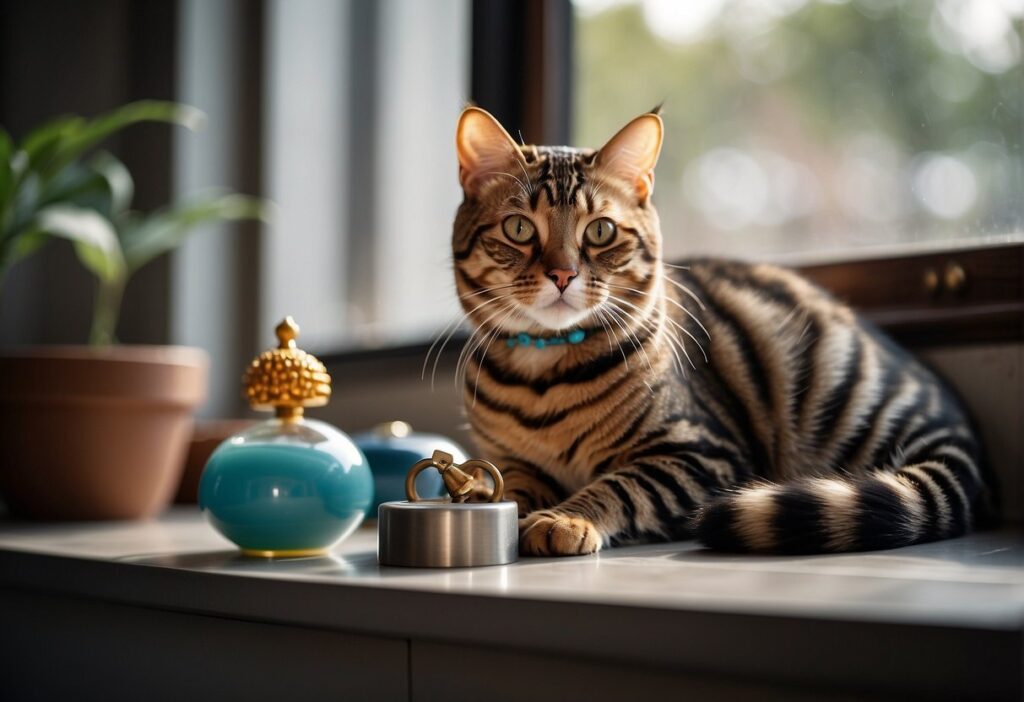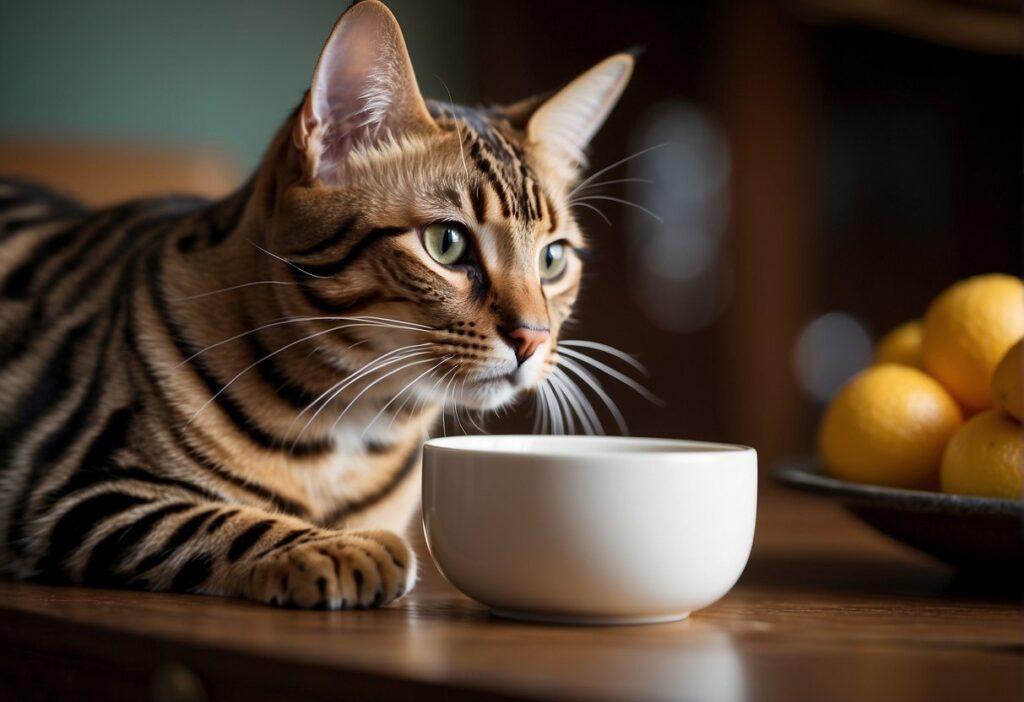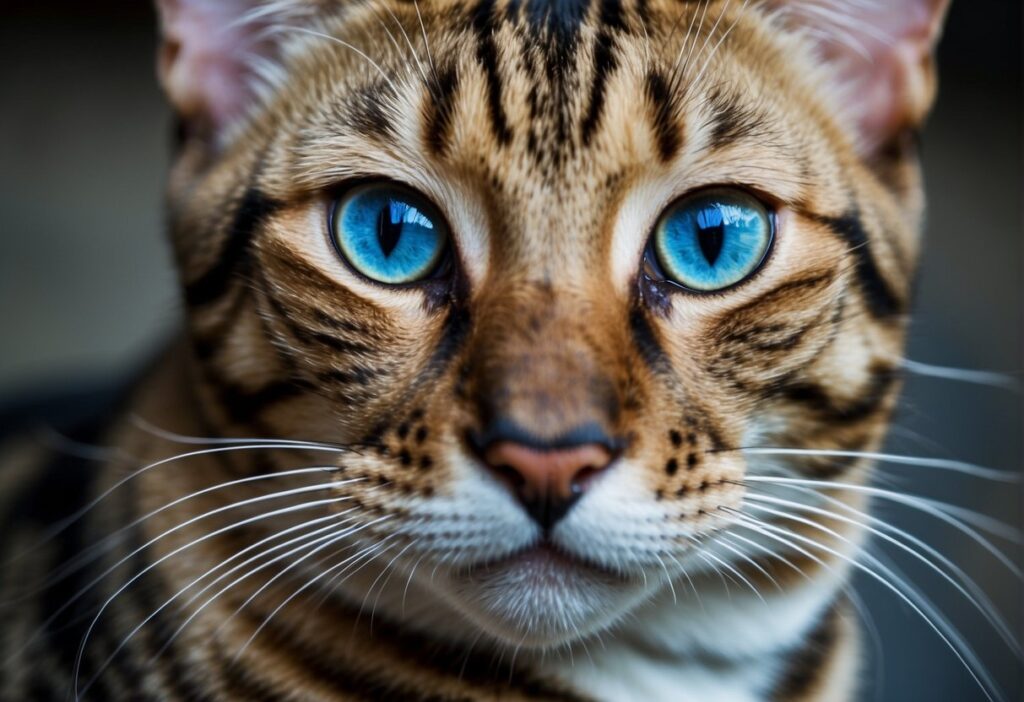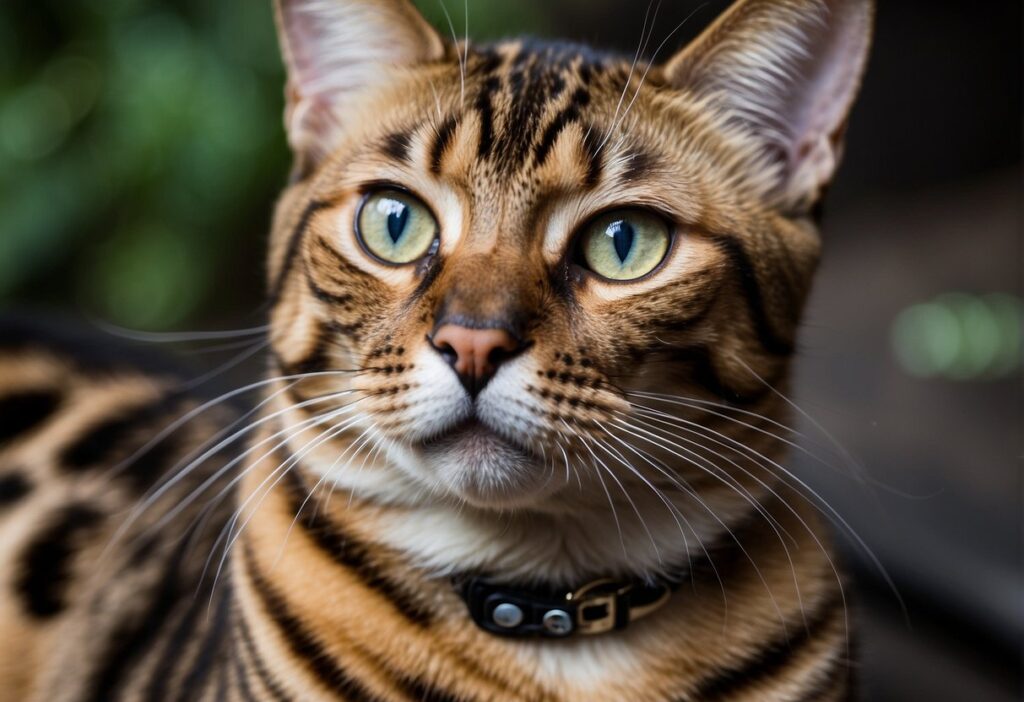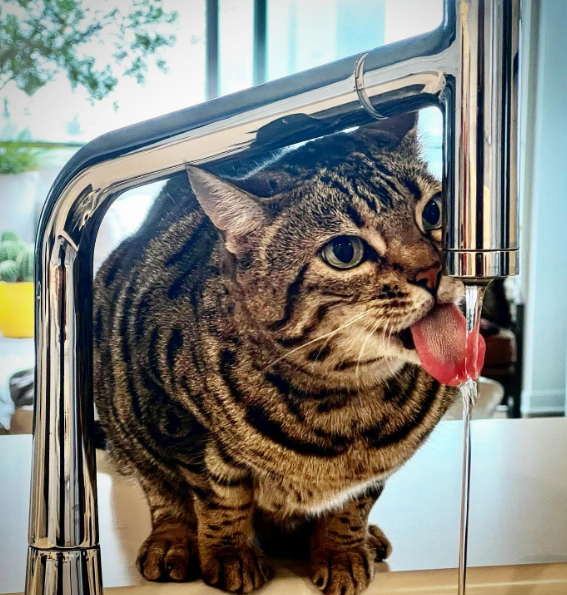
Bengal cats do shed but not as much as other domestic cats. Their coat is more pelt-like and doesn’t shed a lot of hair.
Kittens will shed their baby fur as they mature, but adult Bengals have silky smooth coats.
Compared to other domestics, Bengal cats are considered low shedders. However, the amount of shedding a cat generates is influenced by nutrition, genetics, weather changes, and sunlight exposure.
Controlling Your Bengal Feline’s Shedding
One way to control shedding is by brushing your Bengal cat regularly. This helps to remove loose hair and distribute natural oils throughout their coat, which can help to keep it shiny and healthy.
You can also bathe your Bengal cat should only be done when necessary as it can dry out their skin if done too often.
When you do bathe them, use a shampoo specifically designed for cats that will help keep their coat soft and shiny without irritating their skin.
Breed Characteristics and Shedding Patterns
Bengal cats are a hybrid breed, created by breeding an Asian leopard cat with a domestic cat. They have a pelt-like coat with a unique spotted or marbled pattern in colors such as silver and brown.
Bengal cats shed year-round, with seasonal shedding occurring in spring and fall.
Are Bengal cats considered hypoallergenic when it comes to shedding?

While there is no such thing as a truly hypoallergenic cat, Bengal cats are considered to be a hypoallergenic breed when it comes to shedding.
Bengal cats have a short, fine coat that requires minimal grooming. They shed very little, and their fur is less likely to cause allergic reactions than other breeds.
With all that said, some people may still be allergic to Bengal cats, as allergies are caused by a protein found in cat saliva, urine, and dander.
According to Vet Ranch, Bengal cats shed significantly less than other breeds, which makes them a good choice for people with allergies but like I mentioned earlier, no cat is completely hypoallergenic, and if you have severe allergies, you may still experience symptoms around a Bengal cat.
What are the grooming needs for a Bengal cat to manage shedding?
As a Bengal cat owner, I know that managing shedding can be a challenge. Fortunately, there are some grooming techniques that can help keep your Bengal’s coat healthy and reduce shedding.
Why might my Bengal cat be shedding more than usual?
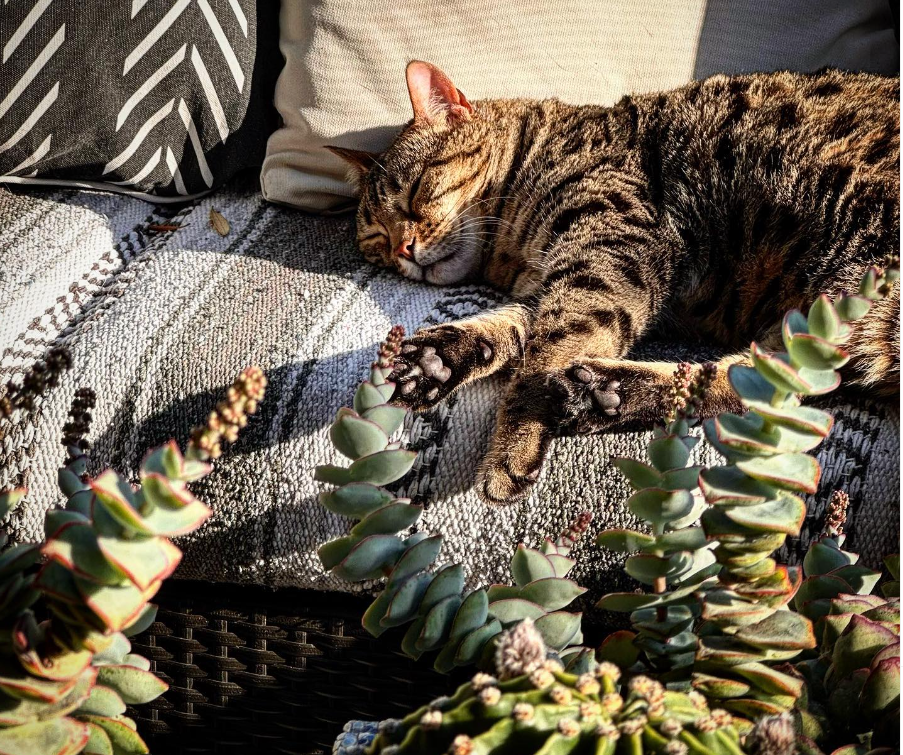
Shedding is a common issue among cats. However, if you notice that your Bengal cat is shedding more than usual, it could be due to several reasons.
Here are some of the possible reasons why your Bengal cat may be shedding excessively:
1. Poor Nutrition
Nutrition plays a vital role in maintaining the health of your Bengal cat’s coat. If your cat is not getting enough nutrients, it can lead to a dull and unhealthy coat, which can cause excessive shedding.
Make sure you are feeding your Bengal cat a balanced diet that is rich in protein, vitamins, and minerals.
2. Stress
Just like humans, cats can also get stressed, and it can affect their overall health, including their coat. If your Bengal cat is stressed, it can lead to excessive shedding.
Try to identify the source of stress and eliminate it as much as possible. Provide your cat with a comfortable and safe environment to reduce stress.
3. Seasonal Changes
Bengal cats tend to shed more during seasonal changes, especially in the fall and spring. During these seasons, cats shed their old coat to prepare for the new one.
However, if you notice that your Bengal cat is shedding excessively during these seasons, it might be due to other factors, such as poor nutrition or stress.
4. Health Issues
Excessive shedding can also be a sign of an underlying health issue. If your Bengal cat is shedding more than usual and you notice other symptoms such as bald patches, irritated skin, or lethargy, it is essential to take them to the vet for a check-up.
Your vet can help diagnose any underlying health issues and provide the necessary treatment.
